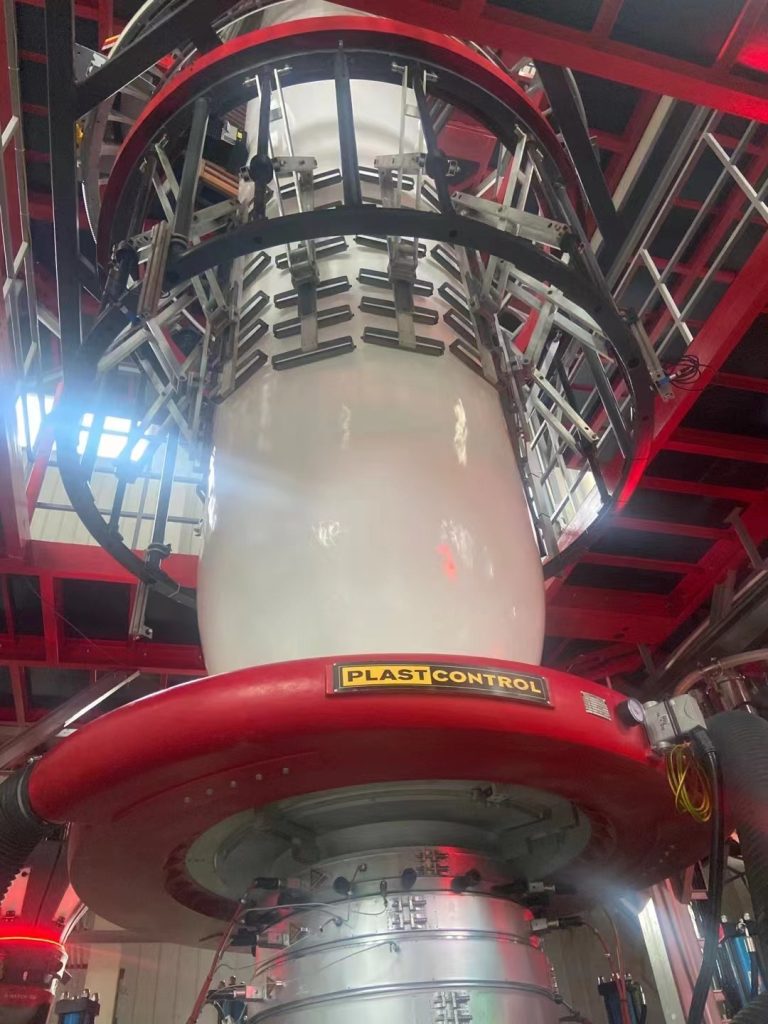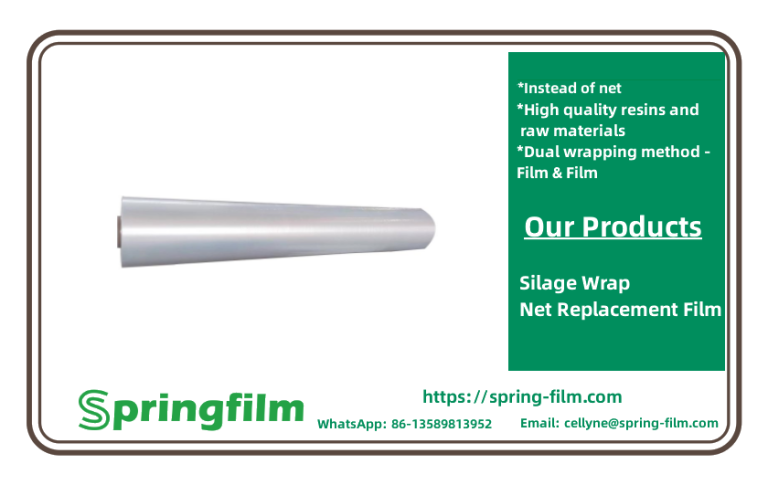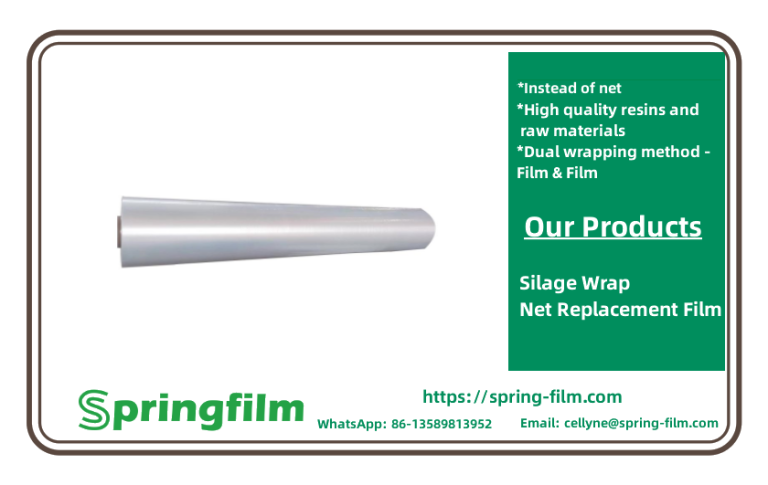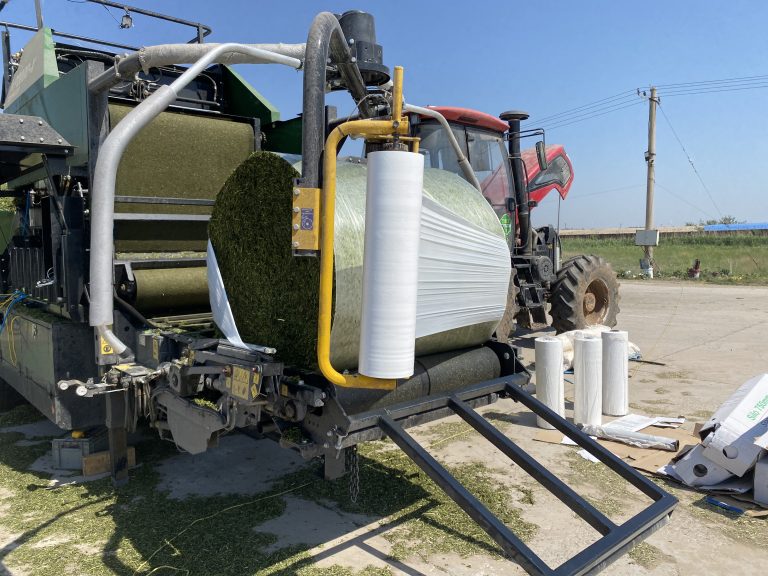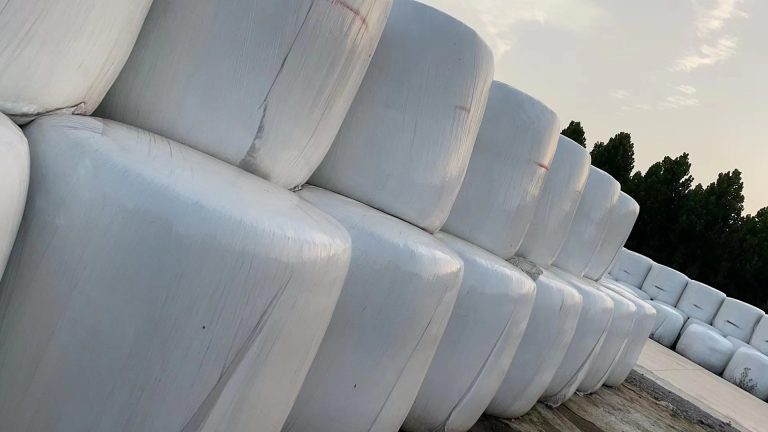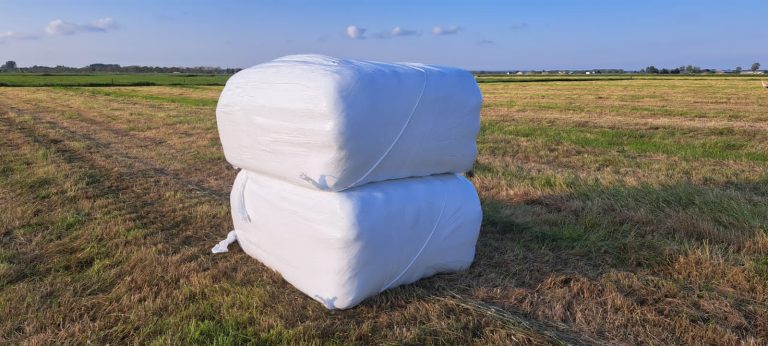Silage and hay are both methods of preserving and storing forage crops for livestock feed, but they have some differences that may make one more advantageous than the other depending on specific circumstances. silage wrap 750mm*25mic Manufacturer,Green Color Bale Wrap,Haylage Wrap Supplier China. Here are some reasons why silage might be considered better than hay in certain situations:
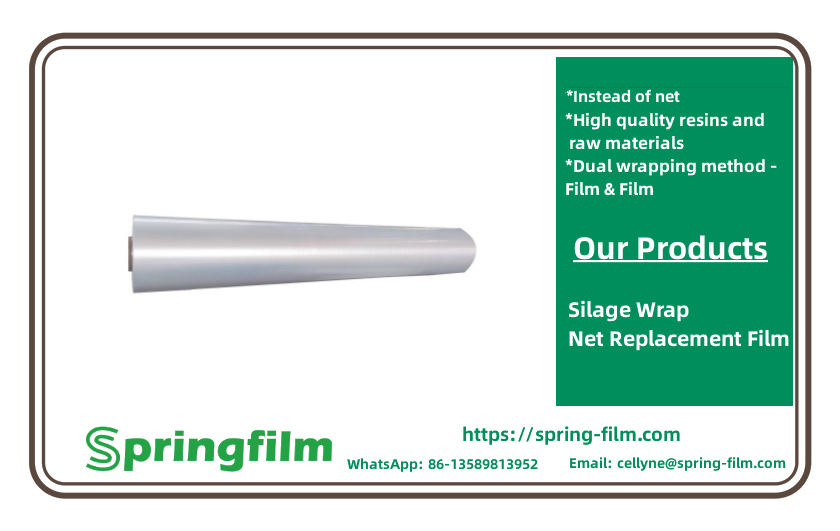
- Nutrient Retention: Silage tends to retain more nutrients compared to hay. The ensiling process (fermentation) in silage helps to preserve the nutritional content of the forage more effectively than the drying process used in making hay.
- Moisture Content: Silage is typically harvested and stored at a higher moisture content than hay. This is beneficial because it promotes the growth of lactic acid bacteria during ensiling, which helps preserve the forage and reduce the risk of spoilage.
- Palatability: Livestock often find silage more palatable than dry hay. The higher moisture content and the fermentation process can enhance the taste of silage, making it more appealing to animals. silage wrap 750mm*25mic Manufacturer,Green Color Bale Wrap,Haylage Wrap Supplier China.
- Flexibility in Harvesting: Silage can be harvested at a wider range of moisture levels compared to hay. This flexibility can be crucial in regions where weather conditions are unpredictable, allowing farmers to harvest forage even during wet periods.
- Reduced Risk of Mold and Dust: Hay is dried in the field, and if not dried properly or if weather conditions are unfavorable, it can be susceptible to mold growth. Moldy hay can be harmful to livestock and may result in wasted feed. Silage, being ensiled at higher moisture levels, has a lower risk of mold formation.
- Less Weather-Dependent: Making hay is highly dependent on weather conditions, as it requires a period of dry weather for the forage to dry properly. In contrast, silage can be made in a wider range of weather conditions, offering more flexibility to farmers.
- Storage Efficiency: Silage is often stored in silos, which can be more space-efficient compared to the large storage areas needed for hay. silage wrap 750mm*25mic Manufacturer,Green Color Bale Wrap,Haylage Wrap Supplier China. This can be advantageous for farmers with limited storage space.
It’s important to note that the choice between silage and hay depends on various factors, including the type of forage crops, local climate, available equipment, and specific needs of the livestock. silage wrap 750mm*25mic Manufacturer,Green Color Bale Wrap,Haylage Wrap Supplier China. Additionally, both silage and hay have their own advantages, and the suitability of one over the other may vary based on the specific goals and conditions of the farm.

